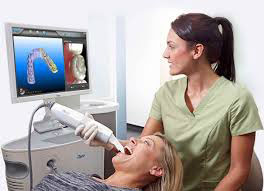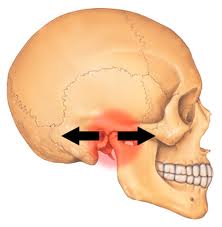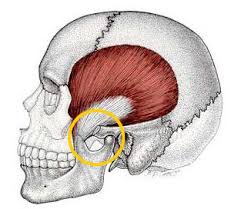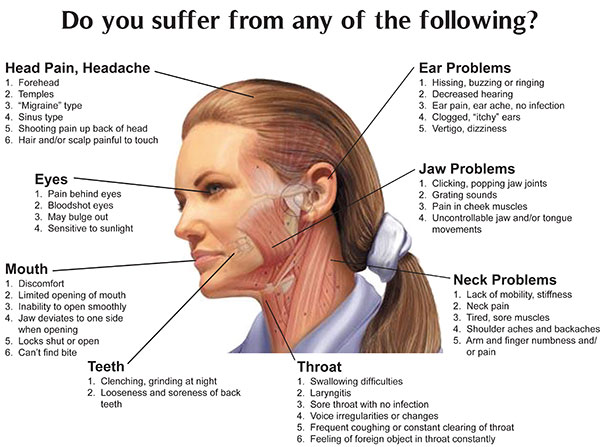The Benefits of CBCT Imaging
March 2nd, 2017

Water Tower Dental Care proudly offers Cone Beam CT, or CBCT imaging, which allows us to take high-res 3-D scans of your mouth and teeth. These 3-D images help us better diagnose problem areas and give us a better view than a normal X-ray would.
But not many people know about all the benefits these compact machines can have.
What is CBCT imaging?
CBCT is a type of X-ray equipment we use when regular x-rays are not sufficient. It can create 3-D images of your teeth, soft tissues, nerve pathways and bone, using a single scan.
During the imaging process, a cone-shaped X-ray beam rotates around the patient’s head, producing up to 200 2-D images. Using specialized computer software, these images are then converted into a 3-D image, which can help us fully diagnose, and then treat, the problem.
CBCT imaging can be extremely useful in complex cases such as:
- Surgical planning for impacted teeth
- Diagnosing TMJ or other oral disorders
- Dental implant placement
- Reconstructive surgery planning
- Evaluation of the jaw, sinus cavities, nerves, and nasal cavity
Benefits of CBCT imaging
There are several benefits to using CBCT imaging, making it the preferred imaging method for not only Water Tower Dental Care, but for many dentists and orthodontists:
It gives us a better idea of what’s going on inside your mouth. By using CBCT imaging, we get accurate measurements and a variety of views and angles, which makes for a more complete evaluation.
It can image bone and soft tissue at the same time. Unlike a typical dental x-ray, CBCT images provide information on your teeth, bones, and soft tissue in a single scan.
It’s quick! The scan typically takes between 20 - 40 seconds for a full mouth X-ray, and less than 10 seconds for a scan of a specific area.
It’s generally less expensive than a CT scan. You read that right - CT scans typically cost more money than these more in-depth imaging scans.
A lower dose of radiation is used. There is less radiation used with a CBCT scan than with a regular CT scan.
The machine itself is small. Unlike those scary x-ray machines you may see in your typical doctor’s office, CBCT scanners are actually very compact.
Preparing For CBCT imaging
There is typically little to no preparation needed prior to your examination. You should wear loose, comfortable clothing, and be sure to take off anything that may interfere with the imaging, such as jewelry, eyeglasses, hearing aids, etc.
Let your dentist know if you are pregnant prior to having any sort of X-rays.
If you have any questions about CBCT imaging, or about your dental health, please contact us today to make an appointment.

 Have you experienced a tight jaw, impressions on your tongue or a tooth that seemed loose, chipped, or fractured? What about sore facial muscles, increased sensitivity in your teeth, or a partner that complains about clicking noises you make with your mouth? If you said yes to all or most of these, you could be a teeth grinder. Read on to find out why teeth grinding is harmful, what causes it, and what you can do to stop grinding and clenching your teeth during the day.
Have you experienced a tight jaw, impressions on your tongue or a tooth that seemed loose, chipped, or fractured? What about sore facial muscles, increased sensitivity in your teeth, or a partner that complains about clicking noises you make with your mouth? If you said yes to all or most of these, you could be a teeth grinder. Read on to find out why teeth grinding is harmful, what causes it, and what you can do to stop grinding and clenching your teeth during the day. When you’re fast asleep, the last thing you’re thinking about is your teeth. (Unless you’re having a dental dream, of course.) So it’s important to make sure that your teeth are well protected before you hit the hay for a long night of sleep. We’ve put together a short checklist that you can use every night before you go to bed to keep your teeth protected all night long.
When you’re fast asleep, the last thing you’re thinking about is your teeth. (Unless you’re having a dental dream, of course.) So it’s important to make sure that your teeth are well protected before you hit the hay for a long night of sleep. We’ve put together a short checklist that you can use every night before you go to bed to keep your teeth protected all night long. Open bites can be a real hassle. Not only can they make your smile look strange, but they can also lead to serious dental problems. Braces, bite blocks and headgear used to be your only option for treating dental open bites. But nowadays, we have a much more discreet and much less invasive way to fix open bites:
Open bites can be a real hassle. Not only can they make your smile look strange, but they can also lead to serious dental problems. Braces, bite blocks and headgear used to be your only option for treating dental open bites. But nowadays, we have a much more discreet and much less invasive way to fix open bites:  Do you notice that your top teeth bite down on the inside of your bottom teeth? If so, you might have a crossbite. Though crossbites don’t necessary cause direct pain right off the bat, they can lead to serious issues in the future. The only way to treat crossbite back in the day was with braces or expanders. Thankfully, there are less invasive ways to get your crossbite corrected today. We’re going to discuss how
Do you notice that your top teeth bite down on the inside of your bottom teeth? If so, you might have a crossbite. Though crossbites don’t necessary cause direct pain right off the bat, they can lead to serious issues in the future. The only way to treat crossbite back in the day was with braces or expanders. Thankfully, there are less invasive ways to get your crossbite corrected today. We’re going to discuss how  Having an underbite is no fun. Not only does can it look strange, but it may also cause serious health issues. Back in the day, the only way to fix underbites was with surgery, braces or expanders. Thankfully, there are less invasive and revealing ways to deal with underbites nowadays. We’re here to tell you how
Having an underbite is no fun. Not only does can it look strange, but it may also cause serious health issues. Back in the day, the only way to fix underbites was with surgery, braces or expanders. Thankfully, there are less invasive and revealing ways to deal with underbites nowadays. We’re here to tell you how 

 Dentistry has never been at a more exciting time when it comes to the rise of technology to help service the needs of the patient. One of the best technological developments is the iTero digital scanner. How does an iTero work, and how can it help you?
Dentistry has never been at a more exciting time when it comes to the rise of technology to help service the needs of the patient. One of the best technological developments is the iTero digital scanner. How does an iTero work, and how can it help you? The Temporomandibular Joint, or (TMJ) is a hinge joint that connects your lower jaw to the bone of the skull located just in front of the ears. This joint allows the jaw to move freely so you can talk, chew, yawn, etc. The muscles that attach to the joint help control the position of the jaw and its movements. Often, many confuse TMJ with the term TMD, Temporomandibular Joint Disorder. Whether you refer to it one way or the other, TMD is a painful and often frustrating condition that, if not treated, can cause serious issues.
The Temporomandibular Joint, or (TMJ) is a hinge joint that connects your lower jaw to the bone of the skull located just in front of the ears. This joint allows the jaw to move freely so you can talk, chew, yawn, etc. The muscles that attach to the joint help control the position of the jaw and its movements. Often, many confuse TMJ with the term TMD, Temporomandibular Joint Disorder. Whether you refer to it one way or the other, TMD is a painful and often frustrating condition that, if not treated, can cause serious issues. In the most severe cases, TMD can drastically change your life and become a very debilitating problem. The disc within the jaw joint can slip out of its position, most likely during sleep. When the person awakes, they discover that their jaw will not open more than a few millimeters. The person can’t open their mouth to eat, talk, or even brush their teeth.
In the most severe cases, TMD can drastically change your life and become a very debilitating problem. The disc within the jaw joint can slip out of its position, most likely during sleep. When the person awakes, they discover that their jaw will not open more than a few millimeters. The person can’t open their mouth to eat, talk, or even brush their teeth.





 Website Powered by Sesame 24-7™
Website Powered by Sesame 24-7™